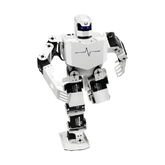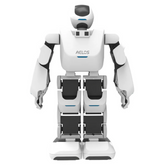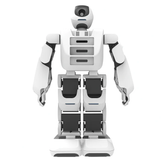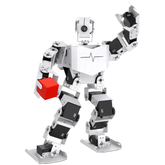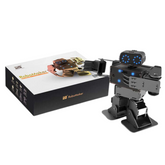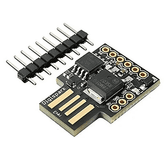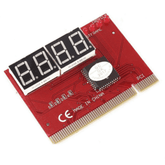Robotic Lab vs Traditional Science Lab: Key Differences
Summary
Education is constantly evolving, and the spaces where learning happens are changing too. The classic science lab, a cornerstone of learning for decades, is now joined by a new, dynamic environment: the robotic lab.
Understanding the roles of each is key to shaping modern education and preparing students for the challenges of tomorrow.

What is a Robotic Lab?
A robotic lab is a modern, hands-on learning space designed for innovation and creation. Here, students engage with the core principles of robotics engineering by designing, building, programming, and testing robots.
The focus of this robotics education lab is not just to learn a concept but to apply it in a tangible way. Learning becomes an active process of problem-solving, where failure is not a mistake but a stepping stone in an iterative design cycle.
Instead of beakers and chemicals, this environment is filled with specialized tools for creation.
It includes a variety of robotics lab equipment, such as microcontroller boards like Arduino, sensors to perceive the environment, and motors or servos to create movement.
Students utilize computer-aided design (CAD) software and 3D printers to fabricate custom parts for their unique projects.
The space is fundamentally interdisciplinary, requiring students to write code, apply principles of mechanics, and use electronics to wire everything together.
What is a Traditional Science Lab?
A traditional science lab is the classic environment many of us picture when we think of science class. It is a controlled setting equipped with microscopes, pendulums, petri dishes, and chemical reagents.
The primary purpose of the traditional science lab in schools is to demonstrate and verify established scientific theories. Students follow structured procedures to conduct experiments in specific domains like biology, chemistry, and physics.
In this setting, the learning process is more guided and observational, aimed at reinforcing theoretical knowledge taught in the classroom.
A chemistry experiment might involve mixing specific quantities of chemicals to observe a predictable reaction, teaching precision and safety.
A biology lab could require students to dissect a specimen to identify its organs or view cells under a microscope, promoting analytical observation.
The main goal is to teach the scientific method through hypothesis, experimentation, data collection, and verification, providing the foundational understanding of the natural world.
Key Differences Between Robotic Labs and Science Labs
While both labs are crucial for scientific learning, their approach, tools, and objectives differ significantly.
Understanding the primary difference between a robotic lab and a science lab helps to clarify their unique roles in education. The following table breaks down these key distinctions.
| Feature | Robotic Lab | Traditional Science Lab |
|---|---|---|
| Core Focus | Focuses on creation, design, problem-solving, and innovation. | Focuses on observation, verification of existing theories, and procedural learning. |
| Learning Approach | Project-based, interdisciplinary, and open-ended. | Structured, subject-specific (biology, chemistry, physics), and procedural. |
| Key Tools | Microcontrollers, sensors, motors, 3D printers, coding software. | Glassware, microscopes, chemicals, Bunsen burners, measurement instruments. |
| Skills Developed | Emphasizes computational thinking, creativity, systems design, and collaboration. | Develops analytical skills, data collection, precision, and procedural accuracy. |
| Nature of Projects | Involves iterative design-build-test cycles where outcomes can vary. | Involves structured experiments with predetermined procedures and expected outcomes. |
| Role of Failure | Failure is treated as a natural part of the iterative learning and debugging process. | Failure is often viewed as an error in following the procedure or in measurement. |
| Subject Integration | Naturally integrates Science, Technology, Engineering, and Math (STEM) in a single project. | Typically focuses on a single science discipline at a time. |
Which Lab is Better for Future-Ready Skills?
While traditional science labs build a crucial foundation, the robotic lab is uniquely positioned to cultivate the skills demanded by the 21st-century economy.
The robotics lab benefits for students are directly aligned with the needs of a tech-driven world, where individuals who can think critically, solve complex problems, and adapt to new technologies are highly valued.
This makes the Robotic Lab in STEM education a vital component for preparing students for the future.
The future of STEM education with robotics lies in its ability to make learning active and relevant. A robotic lab cultivates specific future-ready skills, including:
- Computational Thinking: Students learn to break down complex problems into manageable parts, design algorithms, and create logical sequences to control their robots.
- Iterative Design and Prototyping: By building, testing, and refining their creations, students experience the real-world engineering design cycle firsthand.
- Problem-Solving and Resilience: When a robot fails to perform as expected, students must debug their code and mechanical designs, building persistence and critical thinking.
- Collaboration and Communication: Complex robotics projects often require teamwork, compelling students to share ideas, divide tasks, and communicate effectively to achieve a common goal.
Can Robotic Labs and Science Labs Complement Each Other?
Instead of viewing these labs as competitors, it is far more effective to see them as complementary partners in a holistic educational ecosystem. A traditional science lab can provide the "why," while a robotic lab provides the "how."
This synergy creates a powerful learning cycle where theoretical knowledge is immediately put into practical, tangible use, showcasing the advantages of robotics in education.
This integrated approach bridges the gap between abstract concepts and real-world applications, making learning more memorable and impactful.
- Students can learn about the principles of optics and light spectra in a physics lab and then apply that knowledge in robotics projects in schools by building a robot that uses color sensors to sort objects.
- After studying cellular respiration in biology, students could design a simple bioreactor in the robotic lab that uses sensors to monitor CO2 levels, demonstrating the process in real-time.
- This combination of foundational knowledge and hands-on robotics learning ensures that students not only understand scientific principles but can also use them to create and innovate.
- Robotics and coding labs for students become vibrant spaces where the laws of science, learned in a more traditional setting, come to life through student-led creation.
Get End-to-End Robotic Lab Setup Services
Setting up a functional robotic lab can seem daunting, from sourcing the right equipment to designing a curriculum that inspires students.
At Robocraze, we specialize in providing end-to-end school robotic lab setup services, ensuring your institution is equipped with the best tools and support to foster the next generation of innovators.
We help you navigate every step of creating a robotic lab, making the transition to a modern, hands-on learning environment smooth and effective.
Conclusion
Both traditional science labs and robotic labs hold immense value in education. The traditional lab provides an essential foundation in scientific principles and analytical methods, while the robotic lab builds on that foundation to develop critical 21st-century skills like creativity, problem-solving, and digital literacy.
By integrating both, educational institutions can offer a comprehensive and dynamic learning experience. As technology continues to reshape our world, the ability to not just understand science but to apply it creatively will be more important than ever, making the robotic lab an indispensable part of modern learning.



